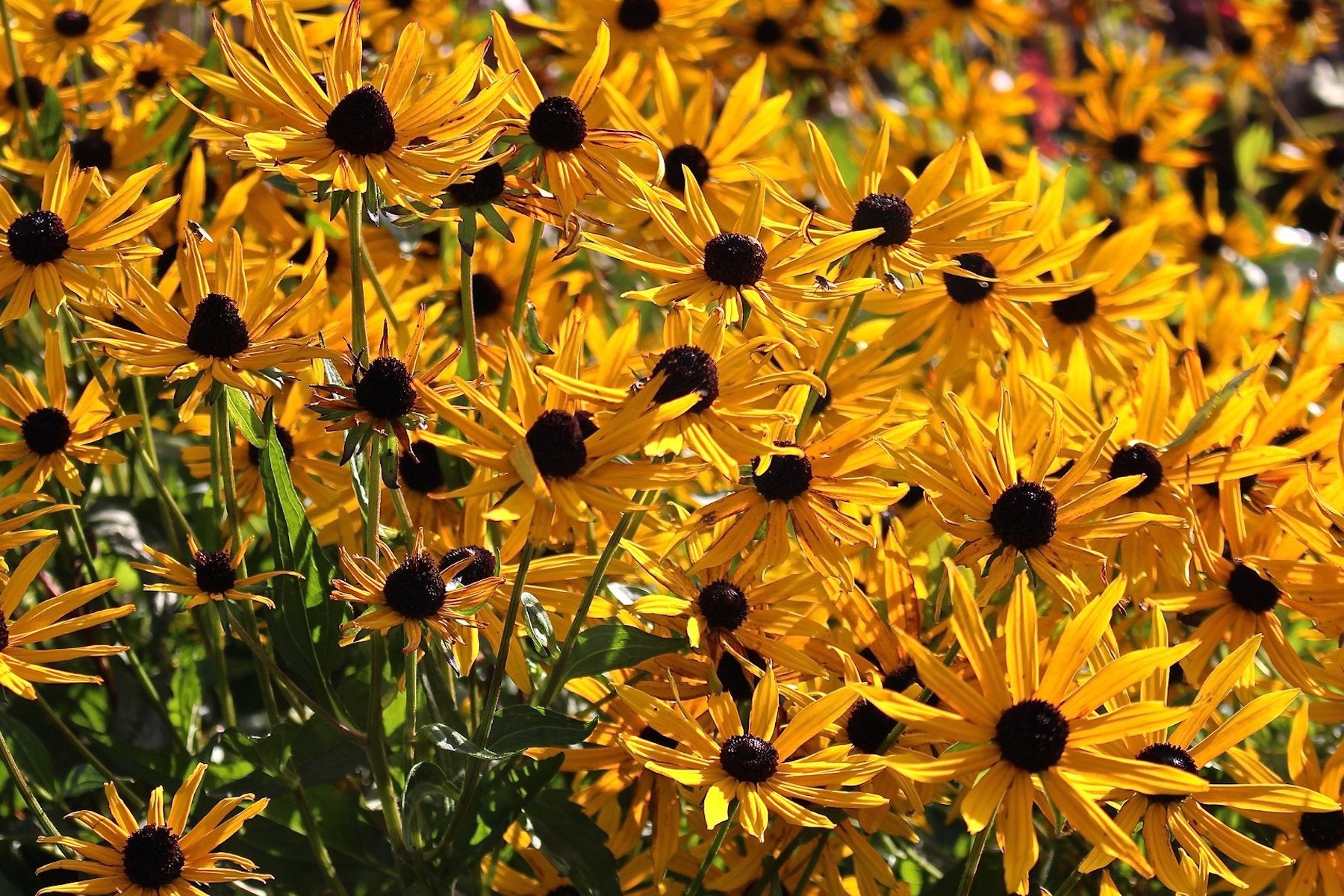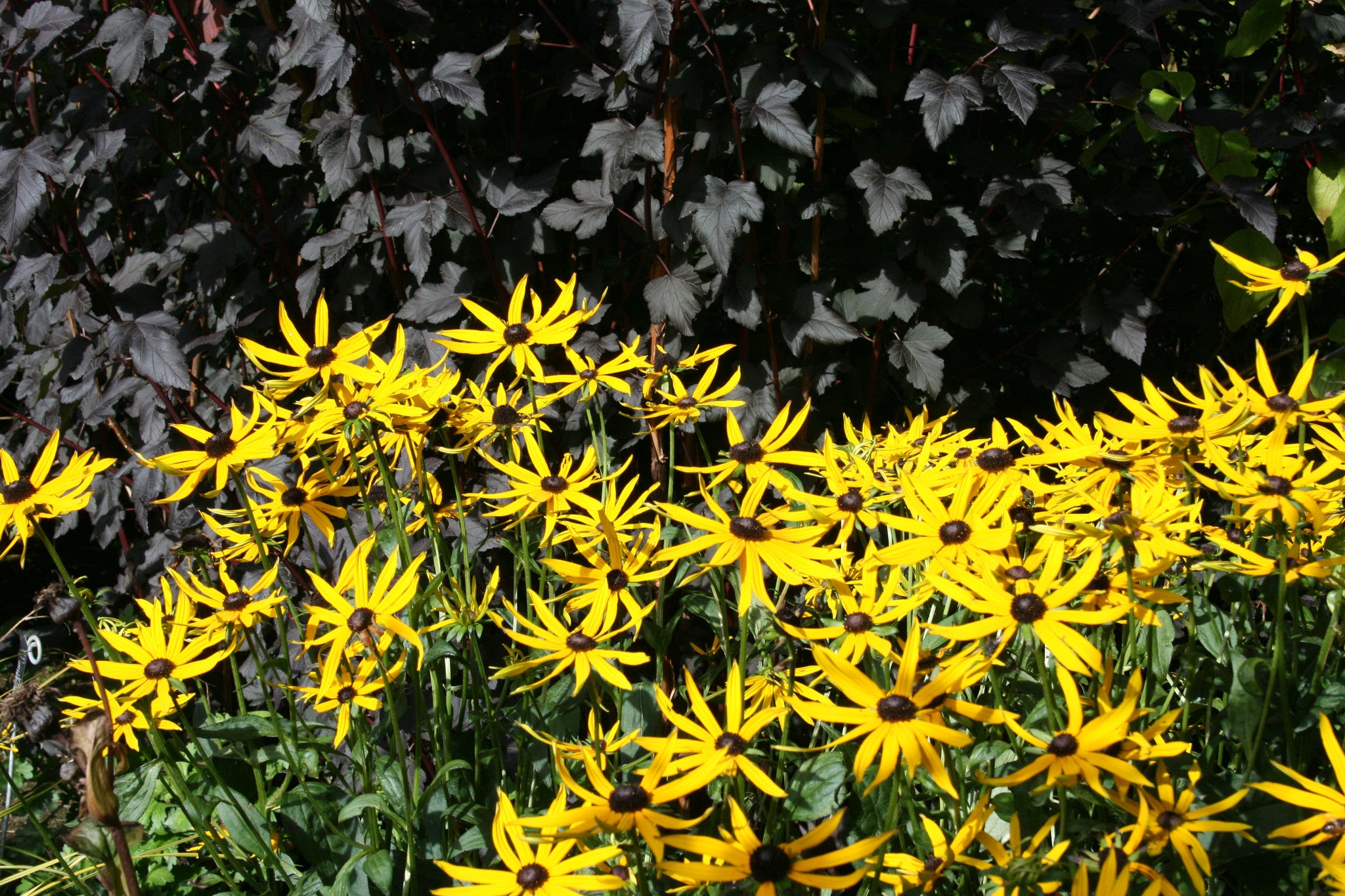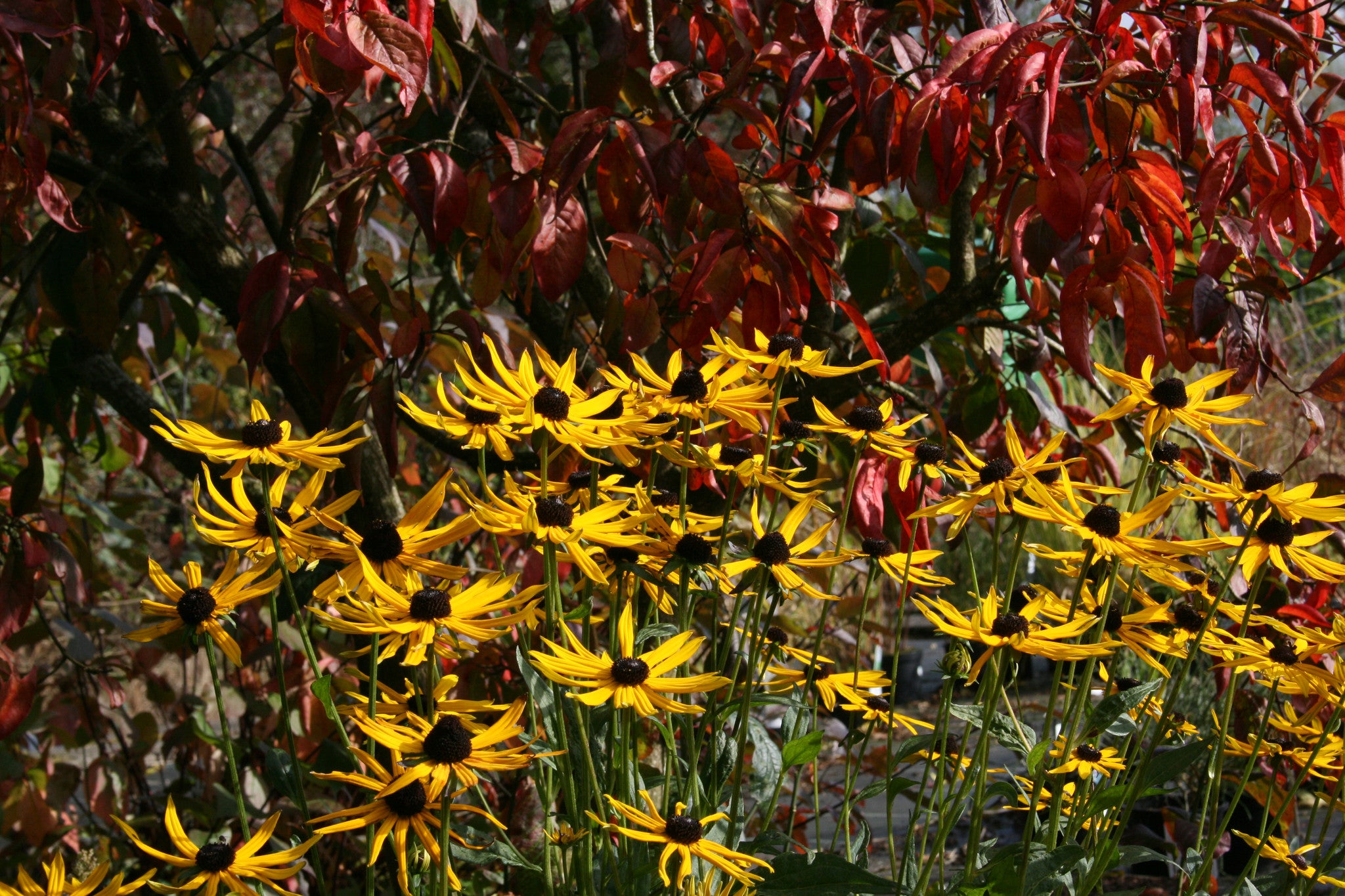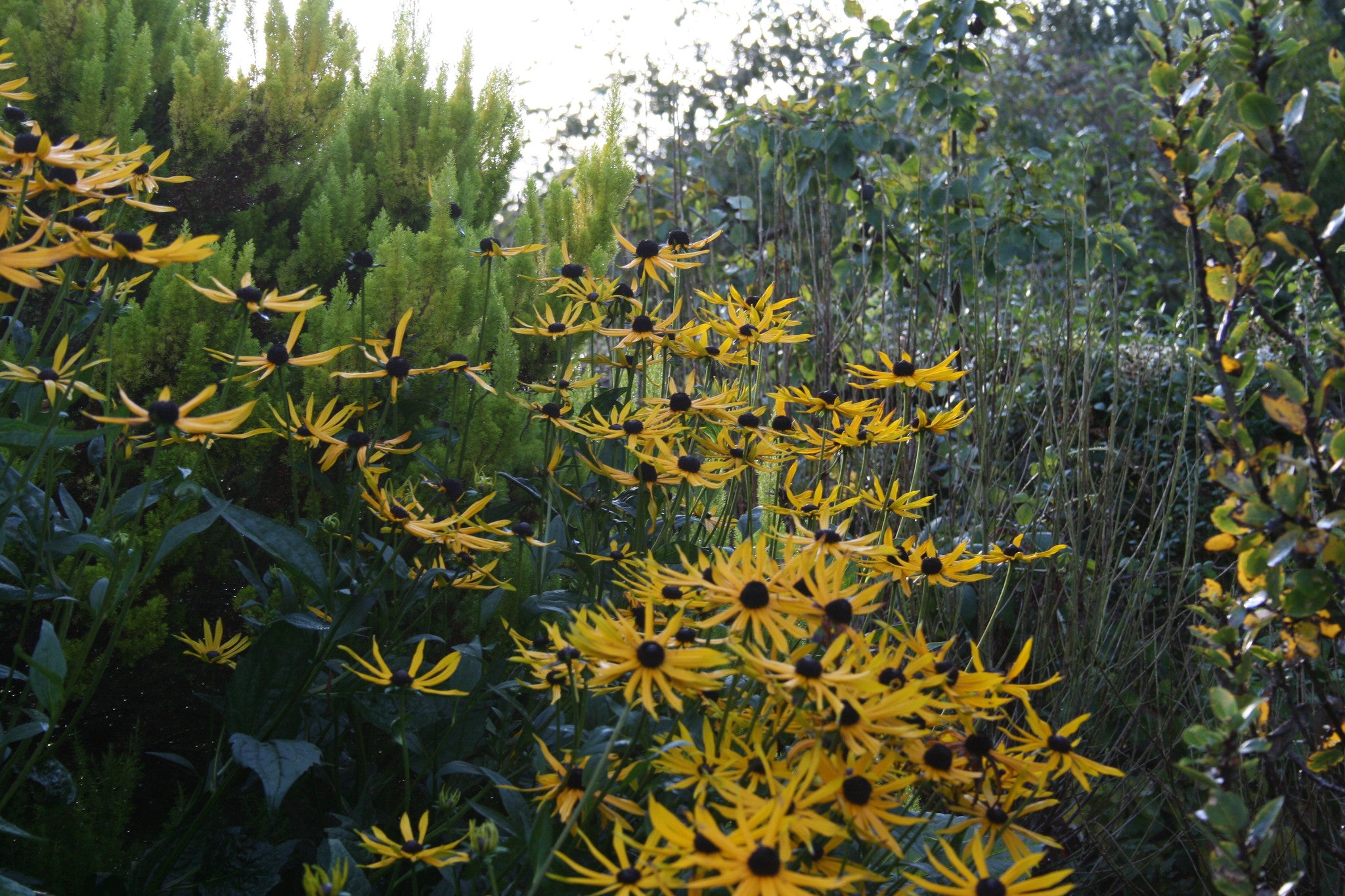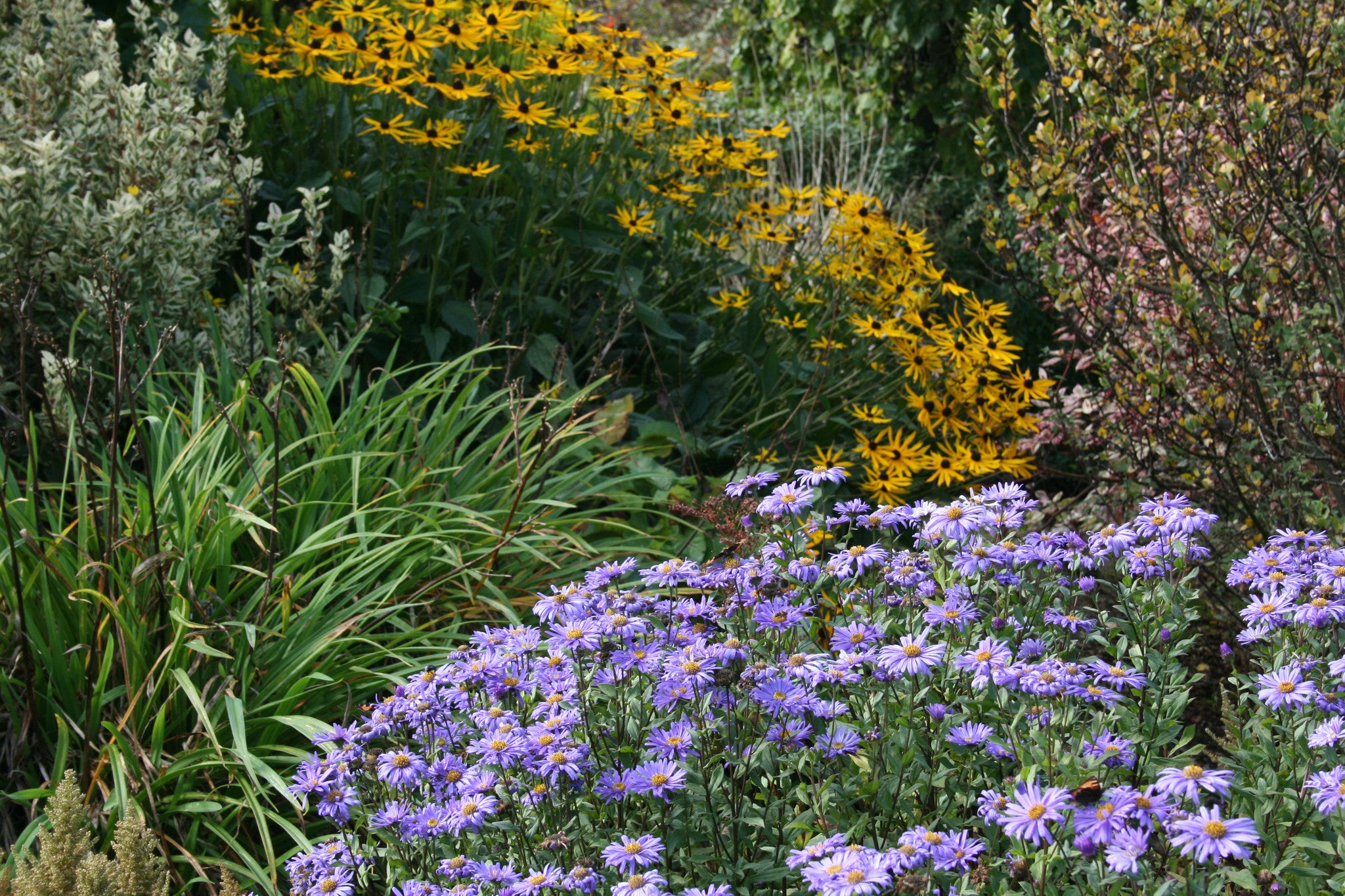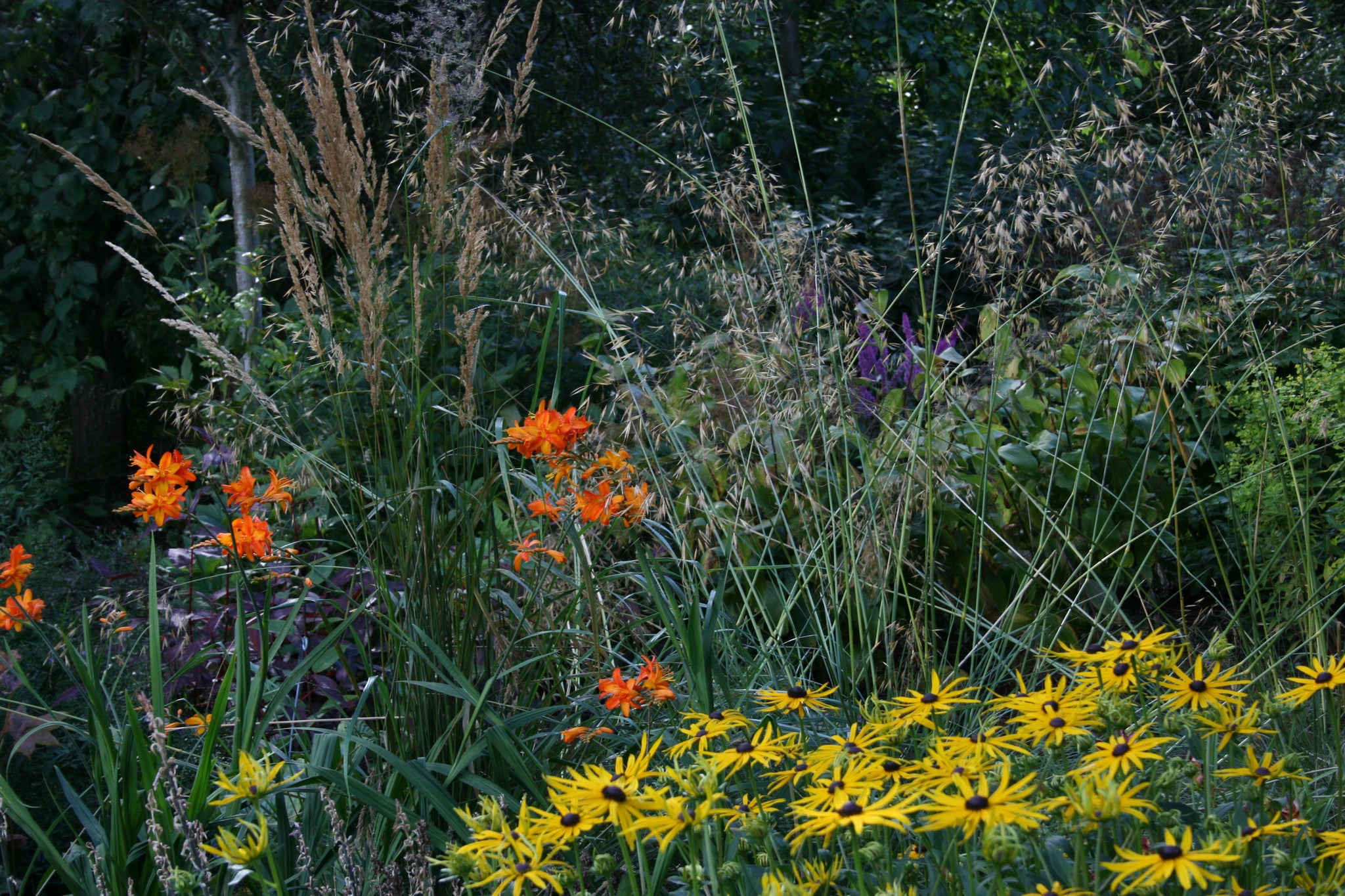Rudbeckia fulgida var. sullivantii 'Goldsturm'
Approx. 0.5 litre pot
About this cultivar:
Rudbeckia fulgida var. sullivantii 'Goldsturm' was introduced by Karl Foerster of Potsdam, Germany in 1937. It should be in every garden! Large, golden-yellow, daisy-like flowers up with cone-shaped, blackish-brown centres from August to October. This award-winning black-eyed Susan looks great planted in bold drifts with other late summer-flowering perennials and ornamental grasses.
- Position: Full sun, partial shade
- Soil: Almost any soil, grows well in Ballyrobert
- Flowers: August, September, October
- Other features: --
- Hardiness: Fully hardy, grows well in Ballyrobert
- Habit: Clump forming
- Foliage: Deciduous
- Height: 60 - 90 cm (2 - 3 ft)
- Spread: 45 - 75 cm (1.5 - 2.5 ft)
- Time to full growth: 2 to 5 years
- Plant type: Herbaceous Perennial
- Colour: Green, yellow, black
- Goes well with: --
About this genus:
Rudbeckia (rood-bek-e-a) is a plant genus in the sunflower family (Asteraceae). The species are commonly called coneflowers and black-eyed-susans; all are native to North America and many species are cultivated in gardens for their showy daisy-like yellow or gold flower heads, some are even red or brown.
The name was given by Carolus Linnaeus in honor of his teacher at Uppsala University, Professor Olof Rudbeck the Younger (1660-1740), and his father Professor Olof Rudbeck the Elder (1630-1702), both of whom were botanists. Rudbeckia is one of at least four genera within the flowering plant family Asteraceae whose members are commonly known as coneflowers; the others are Echinacea, Dracopis and Ratibida.
Rudbeckia is a tough summer-flowering perennial grows almost anywhere that isn't full shade or a pond. It is a tough, low maintenance plant which makes it perfect for wet gardens. Where happy, Rudbeckia spreads into a slowly widening clump that gets more floriferous each year. Rudbeckia flowers attract butterflies and the seed heads are a favorite of goldfinches; and they look great in the autumn when the petals fall off.
As for partners, obvious ideas are grasses and other plants int he sunflower family (Asters, sunflowers etc). Try against dark backgrounds. Anyway, I think these look great anywhere.
- Reviews
- Questions
Perennial mix
Received in good condition and appear to be bedding in
Goldstrum
Strong healthy plants

